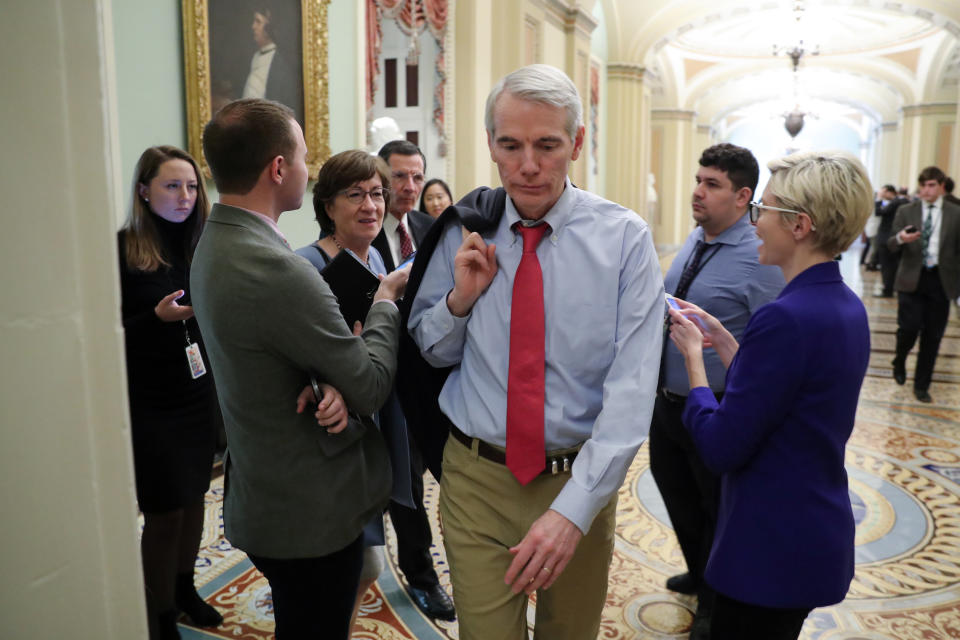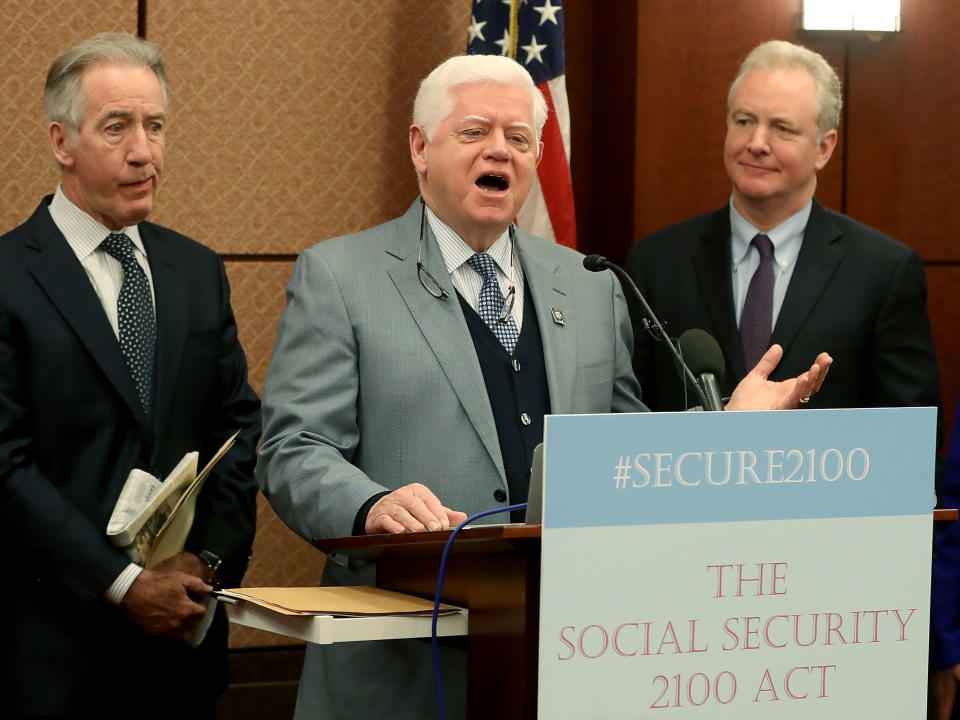4 ways Washington just changed how you save for retirement
President Trump signed a $1.4 trillion spending bill Friday that includes the SECURE Act, a bill introduced this year to help people save for retirement. Among other features, the bill removes the age limit restricting IRA contributions, expands access to annuities in retirement plans, and raises the age at which people need to start taking required minimum withdrawals.
In May, the House of Representatives passed the bill by an overwhelming vote of 417-3. On Thursday, the Senate passed the overall domestic appropriations bill by a vote of 71-23.
The bill, the Setting Every Community Up for Retirement Enhancement Act, represents the first major retirement legislation since 2006. Rep. Richard Neal, chairman of the House Ways and Means Committee, has noted that the bill “represents a major bipartisan accomplishment.”
“Millions of hard-working people will have a more financially secure retirement,” says Shai Akabas, who steers the Bipartisan Policy Center’s Commission on Retirement Security and Personal Savings, in a statement.
The big changes include: getting more part-time workers to save, raising the age of required minimum distributions for IRAs, and helping small businesses provide 401(k)s to their workers.
Sen. Rob Portman (R-OH) has been a champion of the bill in the Senate and said in a statement that passage is “a big victory that will help ensure that all hard-working Americans have a chance to build a nest egg for their retirement.“

Here are four of the key components of the final package and how they might impact your savings.
More saving options if you work part-time or for a small business
Two groups often left out of retirement savings plans are part-time workers (who can legally be excluded by their employers) or employees of a small business (who often can’t or won’t offer a 401(k) or other savings plan). A recent survey found that 31% of employed adults in the U.S. lack access to a retirement savings plan at work.
The law aims to change that, at least somewhat.
The rules require employers to give their part-time employees access to company retirement plans once they work over 500 hours for three consecutive years or for 1,000 hours for a single year.
The new law also includes new credits to small businesses to make it more affordable for them to offer their own retirement plans. One section increases the tax credit to help a small business with plan start-up costs. Another provision creates another tax credit to defray startup costs for new plans if those plans include automatic enrollment.
Automatic enrollment has been shown to increase employee participation and lead to higher retirement savings. One state-level plan that features automatic enrollment is in Oregon. “Really, what we've done is turn apathy and inertia into our ally,” said Tobias Read, the founder of the program, during a recent appearance on Yahoo Finance.
You’ll be able to contribute for longer (as you live longer)
The Secure Act also includes a provision that eliminates the maximum age for IRA contributions. Before, you were only eligible to contribute to a traditional IRA if you were younger than 70 ?. There are no age limits on contributions to 401(k) plans or to ROTH IRAs.
According to the Bureau of Labor Statistics, the labor force participation rate among workers over 70 has jumped in recent years and is expected to continue to rise. In 1996, the rate was 12.5% among Americans aged 70-74. In 2016, it was 19.2%.
The law also changes the age when IRA and 401(k) holders must begin to withdraw from their account (and pay taxes on that money). Required minimum distributions used to begin at age 70 ?. The law increases the limit to age 72. As Portman noted earlier this year in a speech on the Senate floor, “we have to ensure that there is longer lifetime savings as people are living longer and healthier lives.”
Another provision allows withdrawals from retirement plans if they are needed when people start or grow a family. The penalty-free withdrawals would be for any “qualified birth or adoption.”
Lower barriers of entry to retirement plans
There are also a variety of less sexy provisions that would lower some of the barriers for workers to sign up for retirement accounts. A Pew analysis found that among workers employed by companies that offer a defined contribution plan, 28% of them are not participating.
The law also makes it easier for annuities to be included in a 401(k), which would allow employees to gain more predictability in their retirement income.
These are changes that are “not going to be as immediately evident to the average American,” says Akabas “but they could have important effects down the road when we talk about gradually increasing the access that people have to a workplace retirement account and the structure of those accounts.”
Removal of the ‘stretch IRA’
Another change — significant for estate planning — is a provision that eliminates what is known as the “stretch IRA.” Currently it’s possible to put money into an IRA that can grow tax-free long after you die to benefit your children or even your grandchildren.
The new rules require that any account be fully distributed a decade after the person who created it dies. Current minimum distribution requirements mean that an account could be structured to last for much much longer.
What isn’t being addressed
The new law — while significant — focuses on only a fraction of the issues facing the retirement system. Difficult and contentious issues lie ahead and will have much bigger impacts on retirement security if left unaddressed.

On Social Security, a recent report by trustees found that the program’s reserve fund could be depleted in 16 years with no action. Rep. John Larson of Connecticut has authored a bill to keep the program solvent through the end of the century. But the bill’s prospects are uncertain. Larson testified at a hearing this year, noting he supports efforts to reform private retirement accounts, but added “our greatest responsibility here in Congress is to protect Social Security and ensure that it meets the needs of today’s beneficiaries and future generations.”
Another issue is multi-employer pensions. Many such plans could become insolvent in coming years, jeopardizing the benefits of workers who have been contributing.
Gordon Gray is a former Republican policy advisor in the Senate and now the Director of Fiscal Policy at American Action Forum. Earlier this year he noted about both Social Security and multi-employer pensions: “those are the big angry problems that stay angry and don't go away.”
Ben Werschkul is a producer for Yahoo Finance in Washington, DC.
Read more:
Retirement expert: The 'easiest' crack to fix in the system is workplace access
On Social Security, 2020 candidate plans miss this one critical issue
A plan that could save Social Security and boost the economy — with one big catch
Read the latest financial and business news from Yahoo Finance
Follow Yahoo Finance on Twitter, Facebook, Instagram, Flipboard, LinkedIn, YouTube, and reddit.
